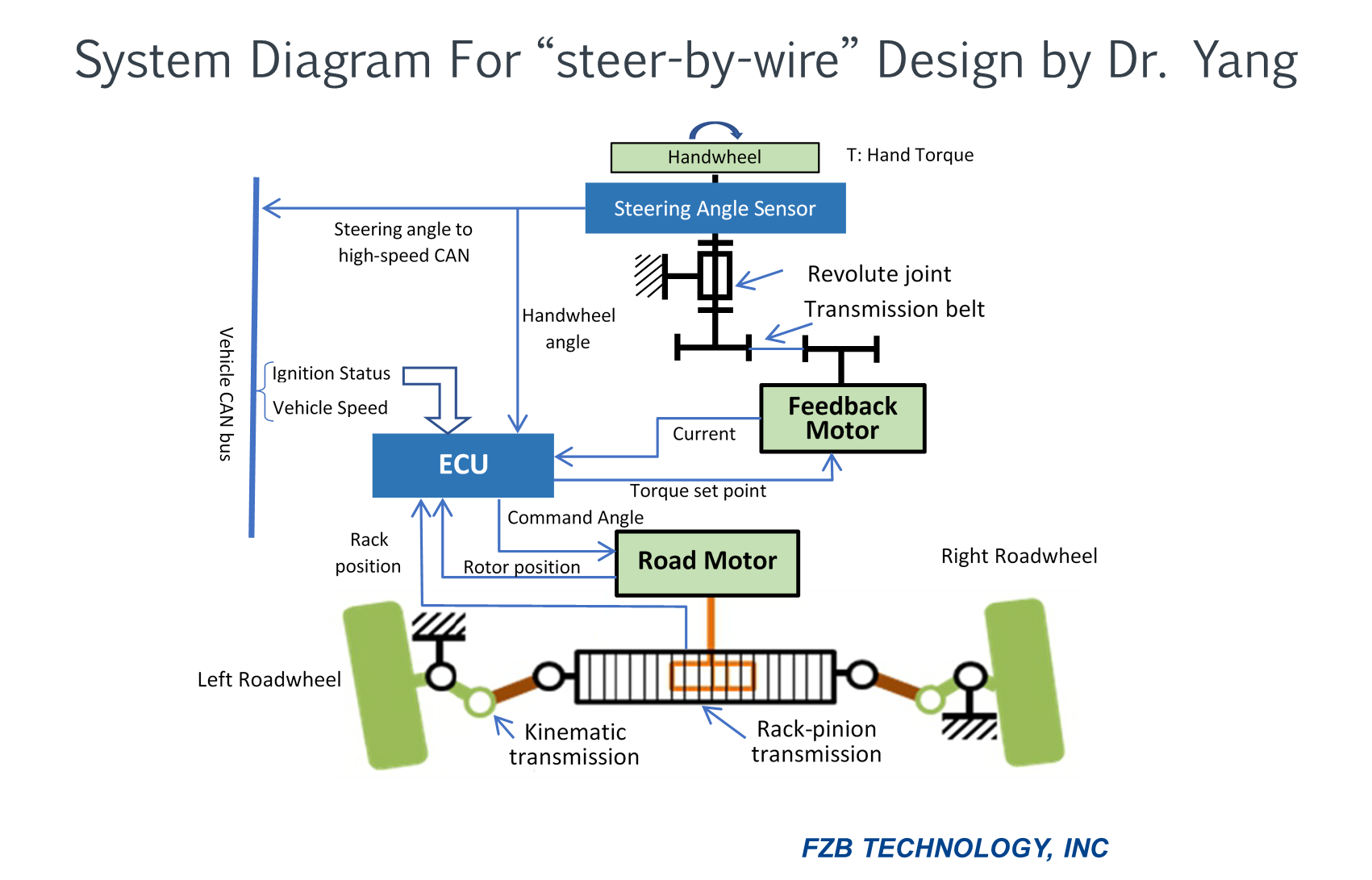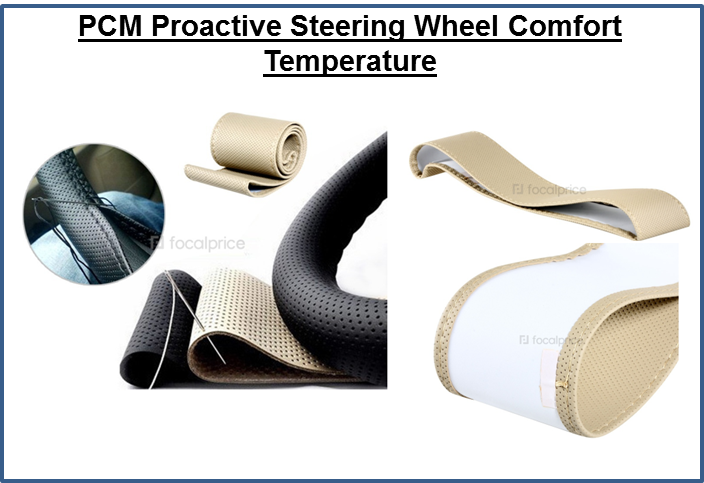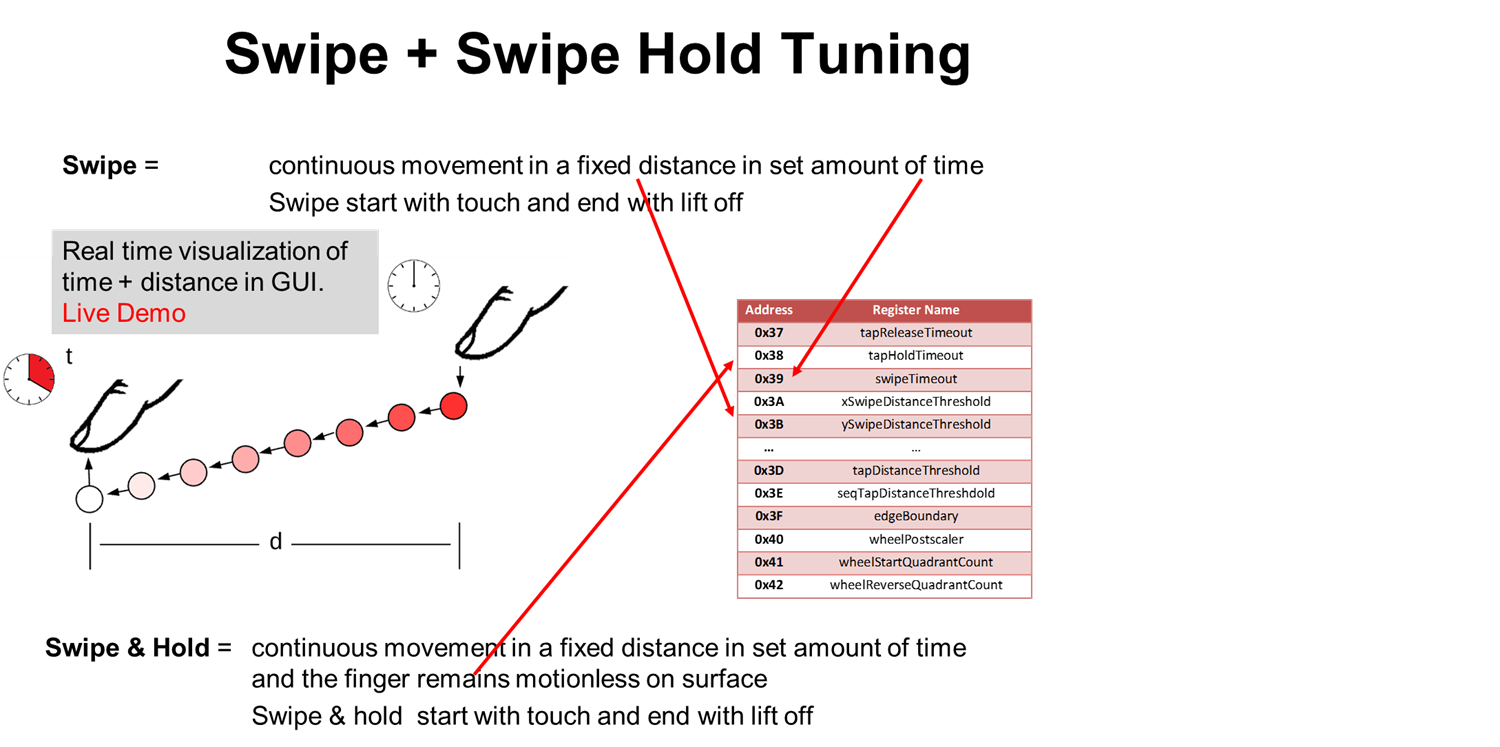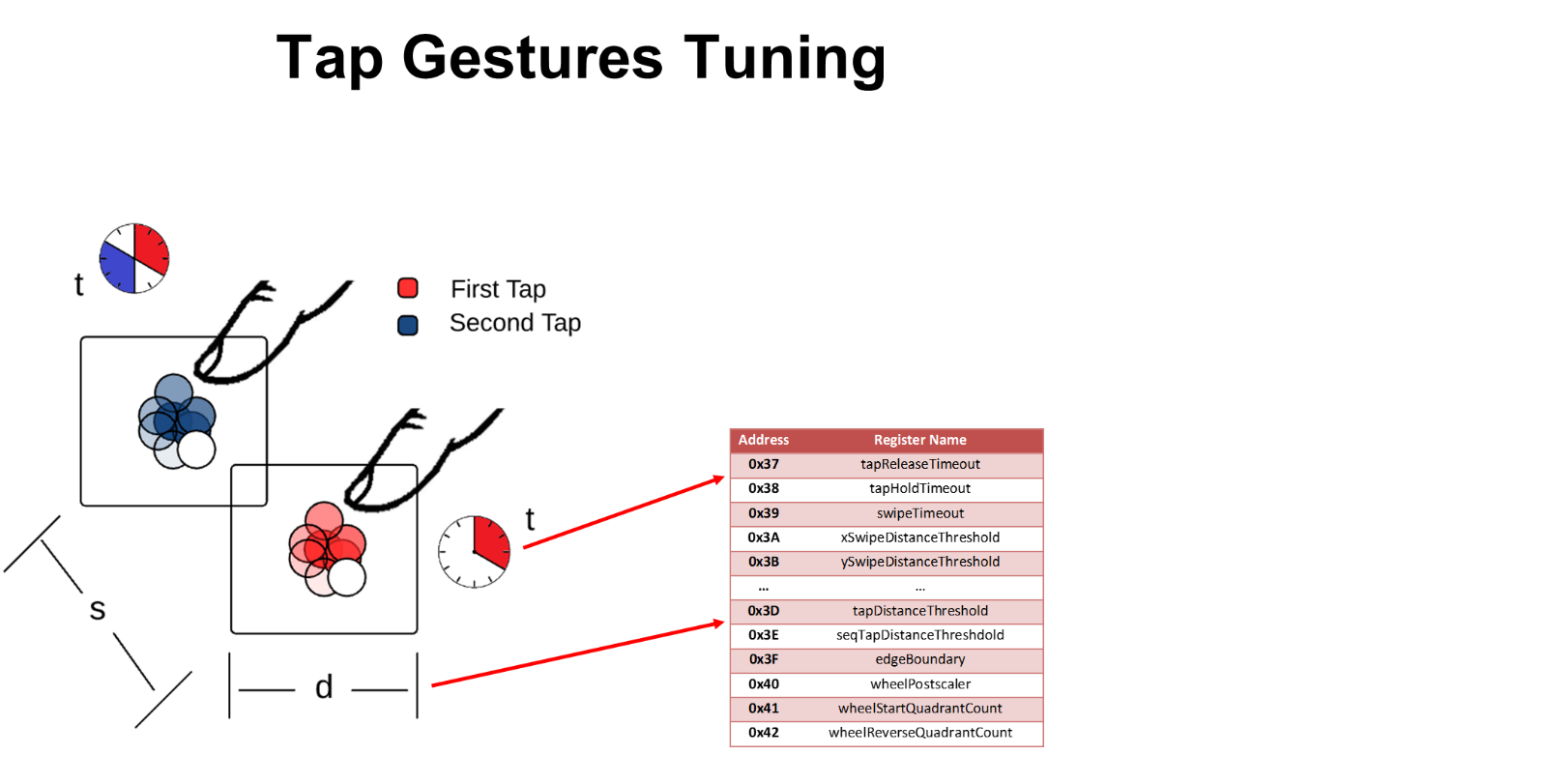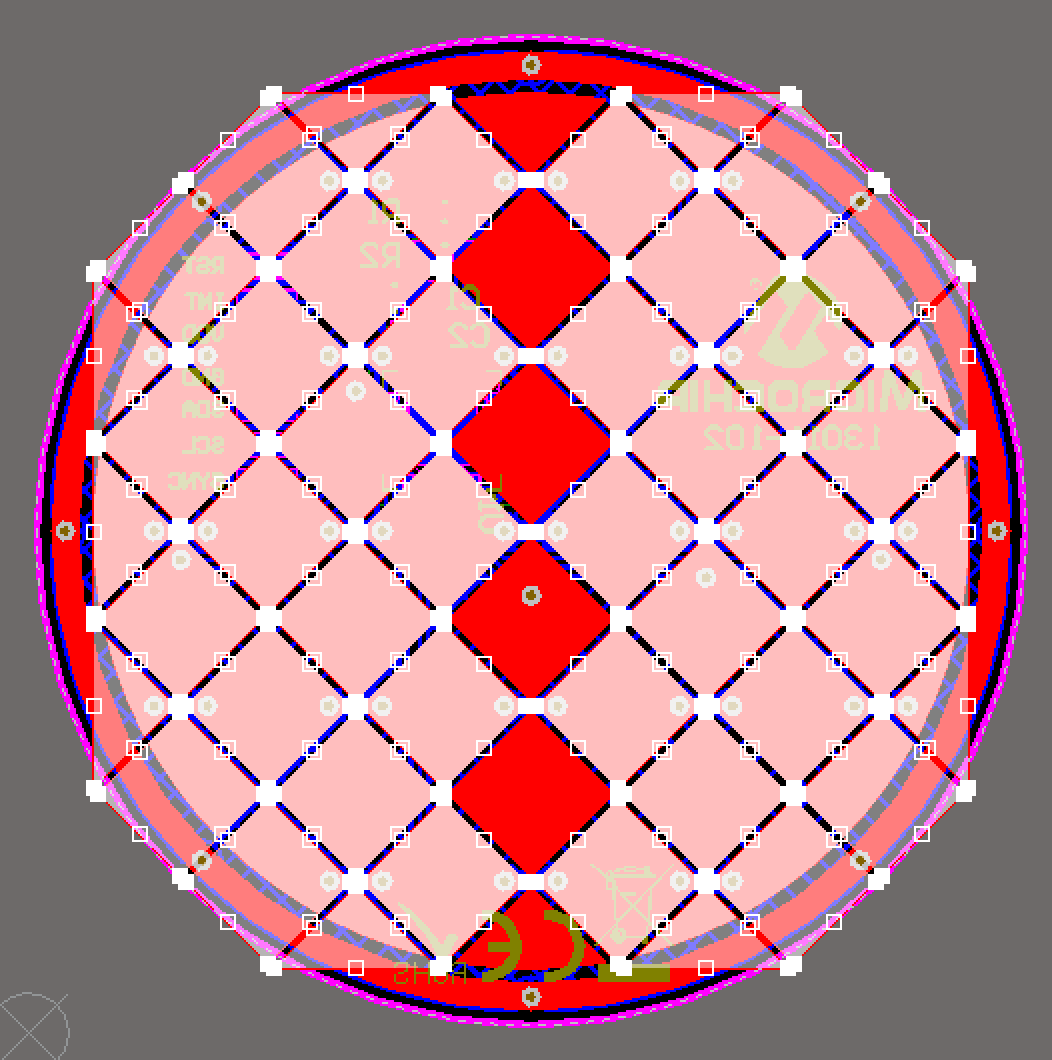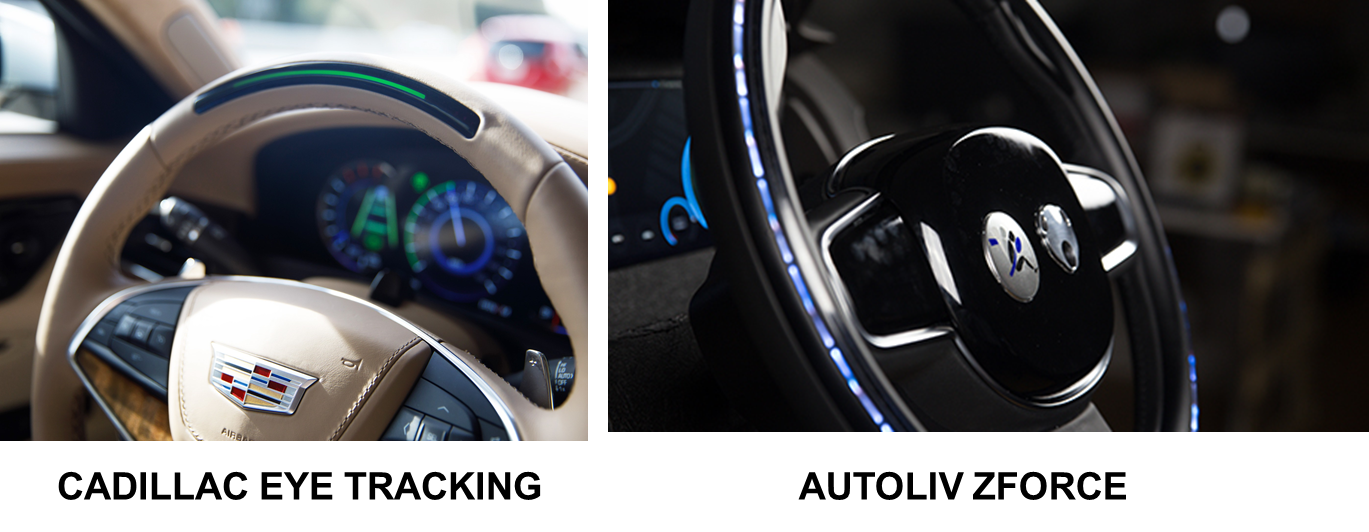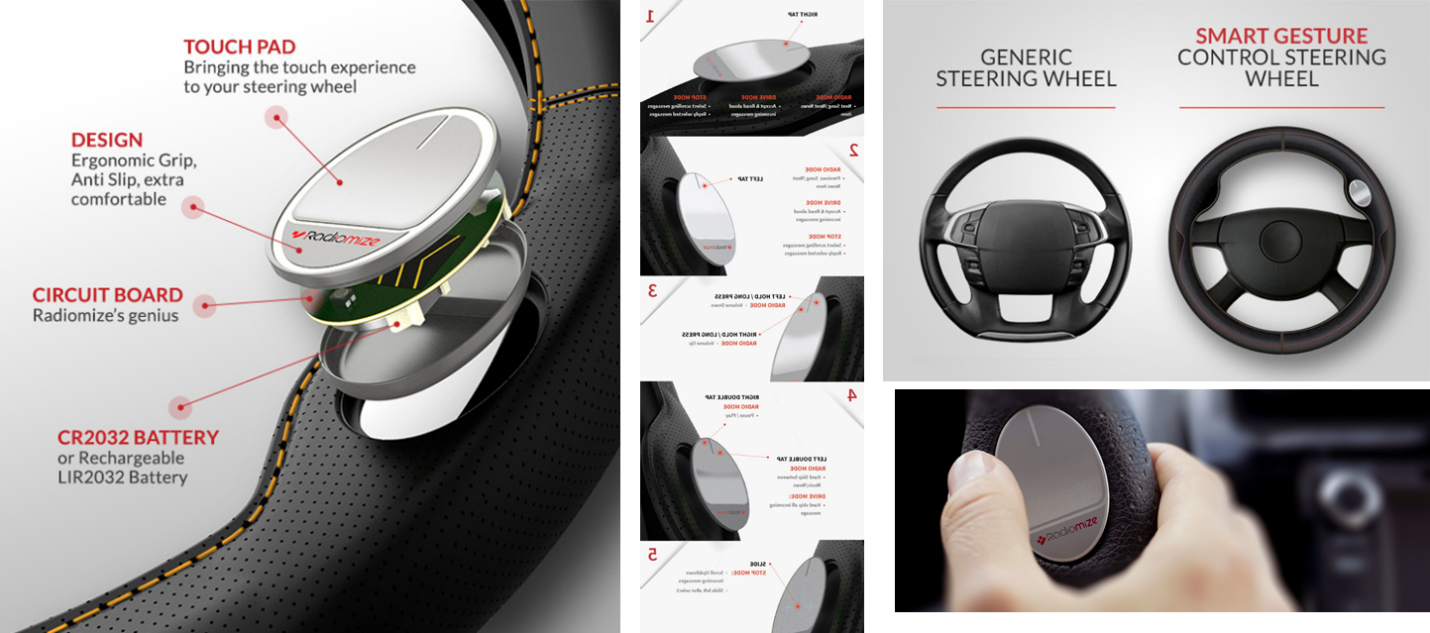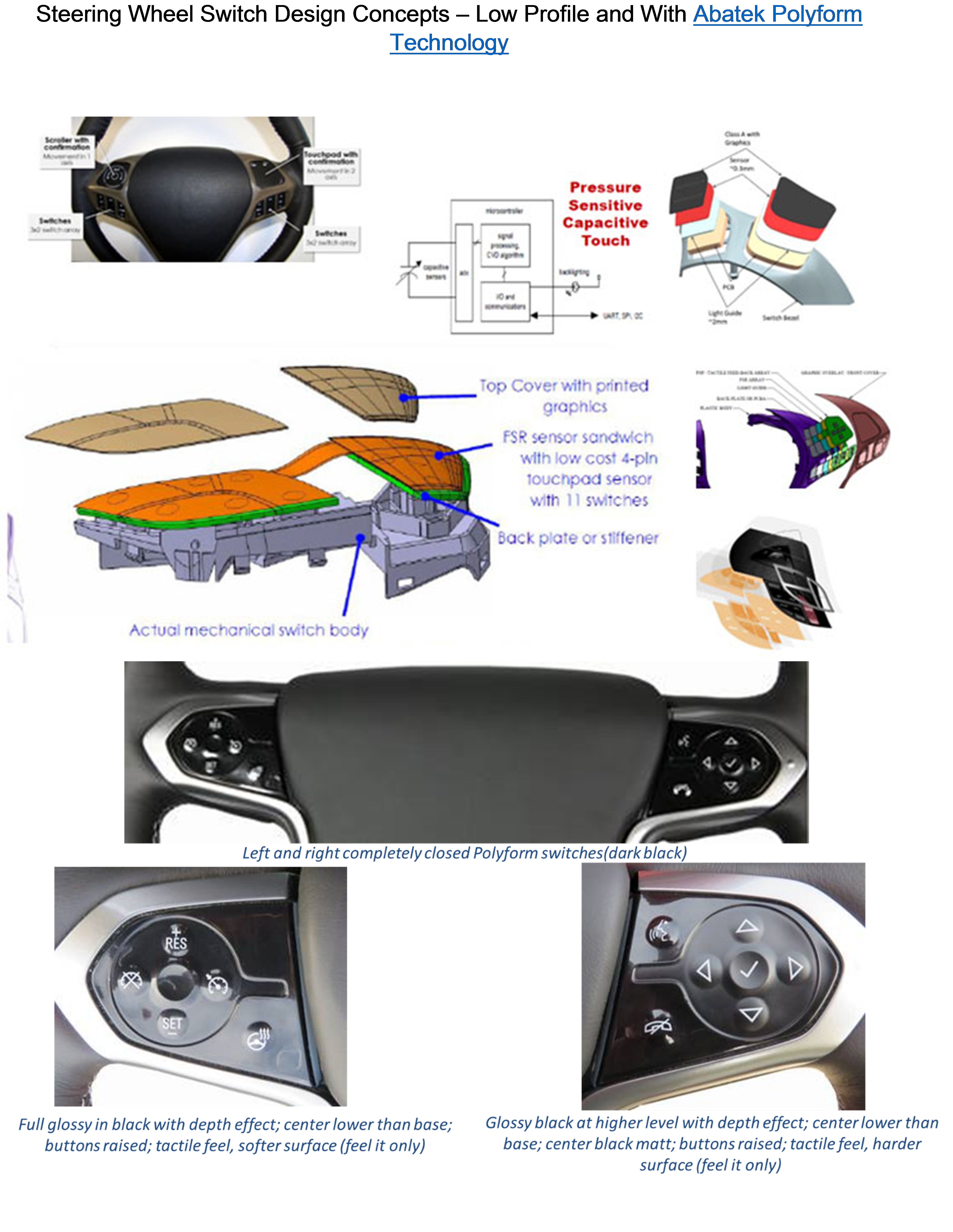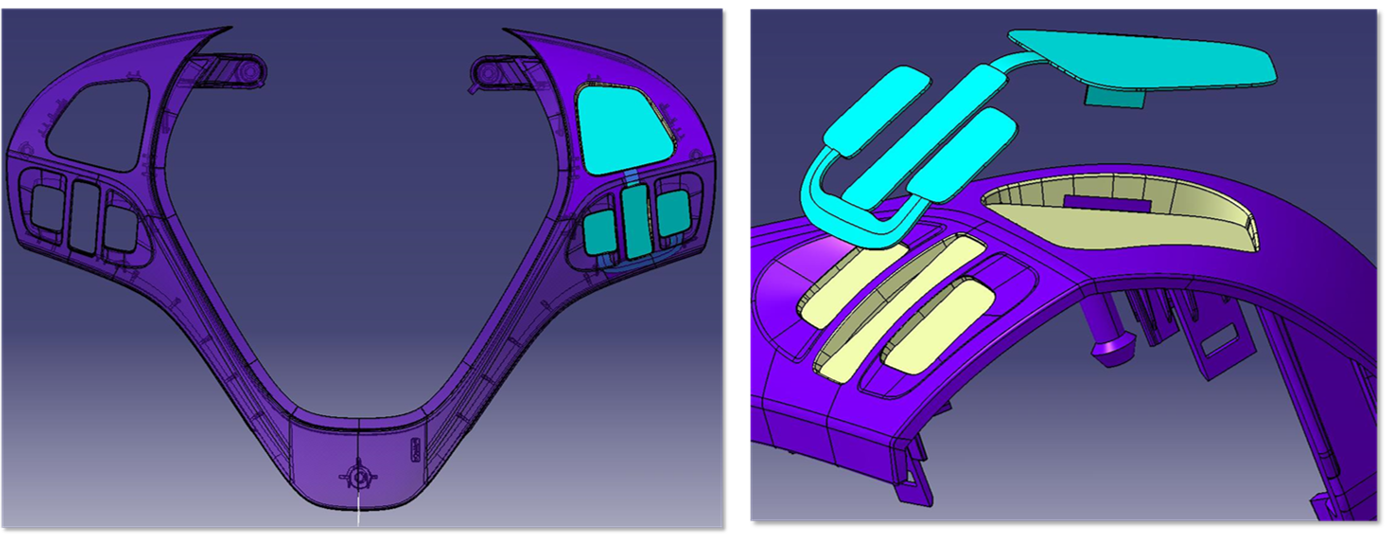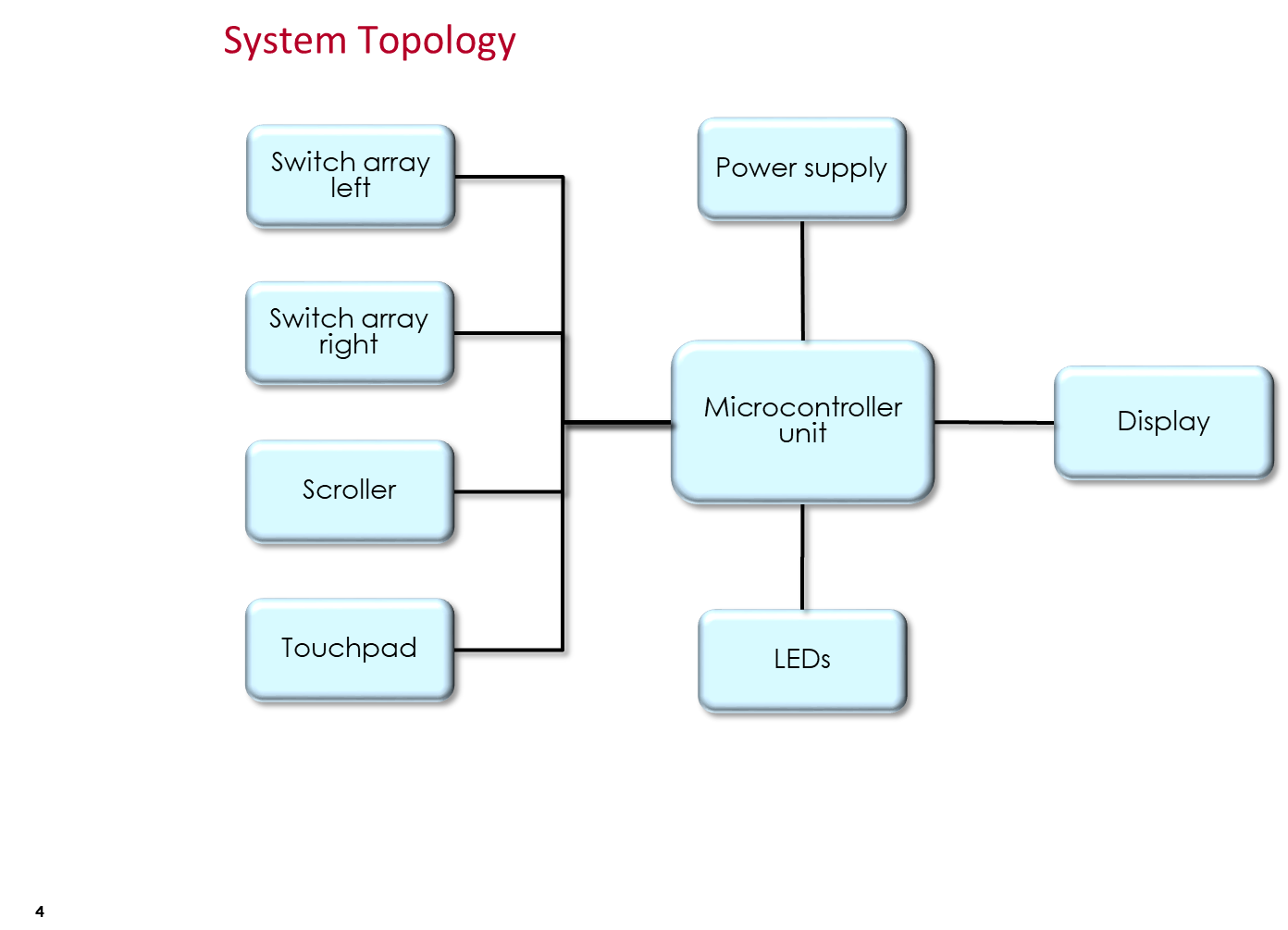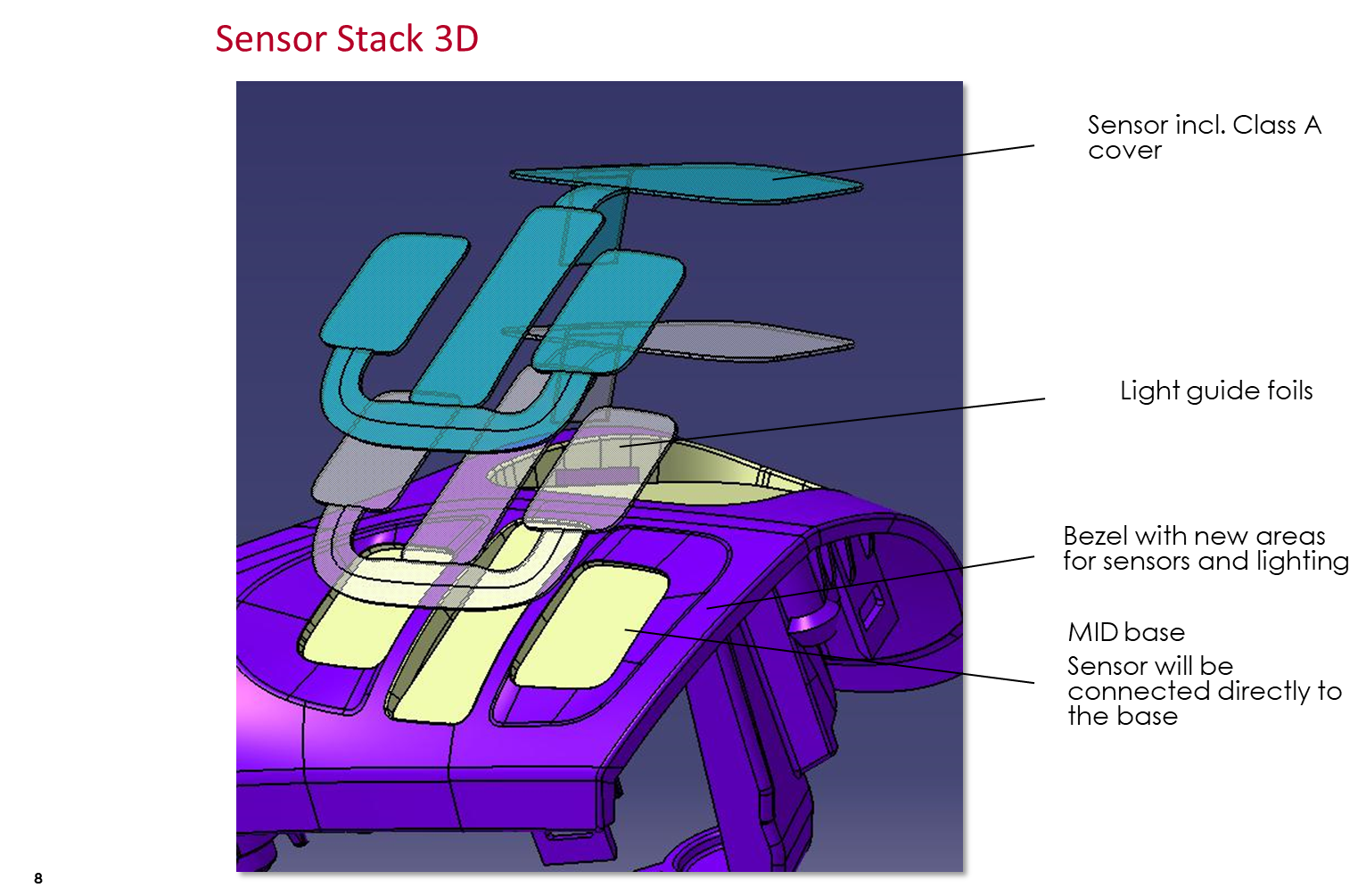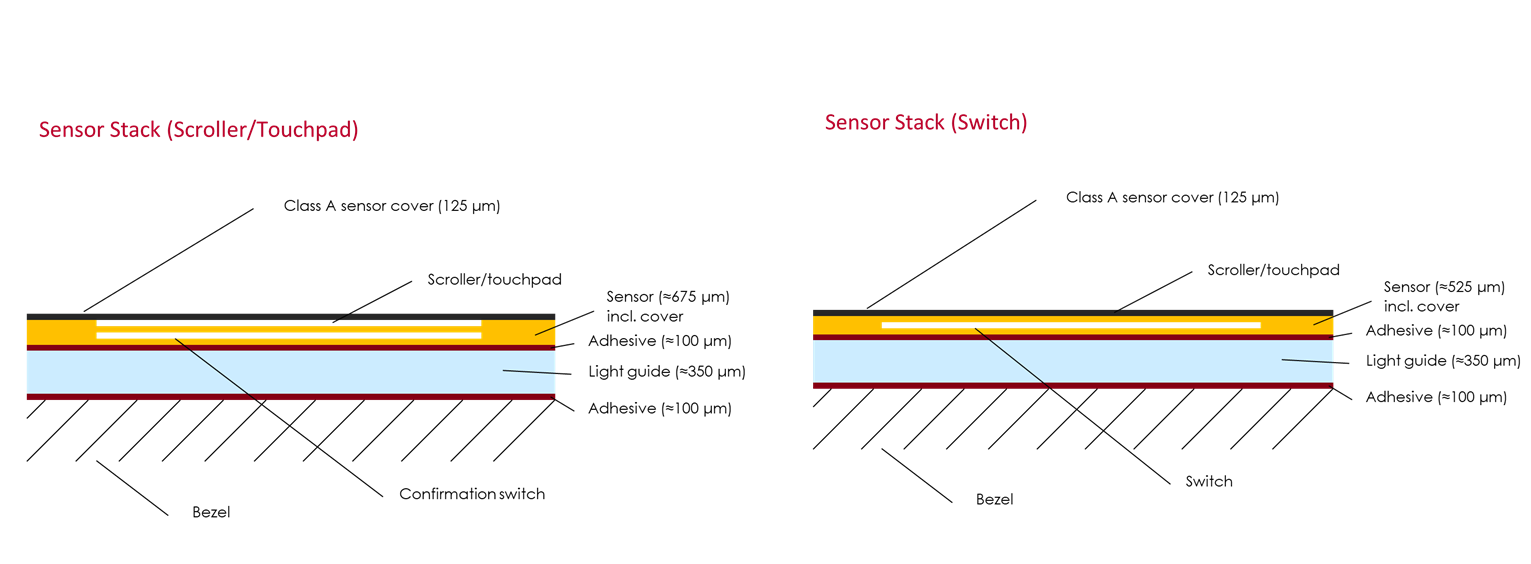Steering Wheel Assembly Design Innovation – Feature Add & Cost Reduction
Below is steering wheel designed to reduce driver distraction in Level 1 to Level 4 Autonomous Vehicles. Another design is to add display in center for Level 4 and Level 5 with Airbag moving into seat from steering wheel.
Steering Wheel Assembly designed to deliver 10% to 25% system cost reduction coupled with improved features. Most important for Level 1 to Level 3 vehicles, design is also intended to Substantially Reduce Driver Distraction.
As you can see all switch controls are at normal eye level and clearly defined to reduce driver distraction. Currently when travelling at 65 mph driver can be driving blind for 100 to 200 feet looking down at the small switches located slightly below horn pad.
For Level 5 Autonomous added the display which can replace display in center console. Display in steering wheel allows for easier functionality; but still keeping hands on wheel functionality. In heavy traffic or other safety related circumstances control may need to be forced back to driver.
Next Generation Steering Wheel Design Assembly – Steer by Wire with integrated 3D Styled Switch & Steering Wheel Assembly to eliminate driver distraction.
3rd Generation of Steering – Steer-by-wire Technology
By Jim Yang, Ph.D.
- Steer-by-wire is a New Generation, or sometimes called the 3rd generation of steering technology.
- Steer-by-wire has its intrinsic advantages.
- The worry about using a “wire” for steering may be compensated by keeping mechanical steering as the backup.
- Steer-by-wire will fully be ready for autonomous driving, which is well prepared for the future.
Generation of Steering Technologies:
1st Generation: Conventional hydraulic steering systems which may come with/without steering assistance.
2nd Generation: Hydraulic steering system which may come with Electrical Hydraulic Power Steering (EHPS) and a steering system which comes with Electric Power Steering (EPS).
3rd Generation: Steer-by-wire – in which sensors detect the movements of the steering wheel and send information to a microprocessor. The computer then sends commands to actuators on the axles, which turn according to the driver’s directions.
Advantages if Steer by Wire:
- Improved Driver Comfort: It is natural to implement variable steering ratios which shall improve driver comfort by reducing the ratio in parking lot and increasing to normal steering ratio when driving on high way.
- Improved Safety: Safety can be improved by providing computer controlled intervention of vehicle controls with systems such as electronic stability control (ESC), adaptive cruise control, and Lane Assist Systems.
- Enhanced Reliability: The electromechanical components shall have better reliability and shall be more maintenance-free.
- Increased vehicle design freedom: as the electromechanical components occupy less place compared to the mechanical counterparts, and the control modules can be placed wherever the design permits.
- Reduces the vehicle’s weight: The technology eliminates any mechanical link between the steering wheel and the tires which are much heavier than electromechanical components.
- Better Ergonomics: Improved ergonomics due to flexibility of location of controls.
- Prepared for the future: The “steer-by-wire” is an autonomous-driving ready technology and well-prepared for the future.
Concerns about relying on a wire for steering:
- Mechanical backup: There’s an option of keeping a mechanical backup in case something goes wrong.
- Dual CPUs system: Two microcontrollers that run independently can be utilized to check the integrity of each other.
- Dedicated Communication Links: Faster and dedicated communication links (CAN, CAN Fd, LIN, and FlexRay) between the steering angle sensor and “steer-by-wire” ECU can be adopted to minimize time delays.
System Diagram:
- Communication: Besides the vehicle CAN bus, a dedicated communication link may be utilized between the Steering Angle Sensor (SAS) and the main ECU to handle the timing delay constraints and to meet reliability requirement.
- Road motor: We may choose to use one or two motors to drive the tires. If using two motors to drive two tires separately, it will better meet Ackermann angle requirements for the two tires.
- Road feeling: Feedback motor is used to generate desired road feeling.
- Safety requirements: Safety requirements (such as ISO-26262, ASIL-D) shall be met including adopting Dual CPUs.
Advantages:
- Yang’s team design and manufacture PMSM/BLDC motors.
- Yang’s team have the specialty of controlling PMSM/BLDC motors smoothly and quietly.
- Yang’s team are experienced in developing steering ECUs including EPS and EHPS systems.
- Yang’s team do not mind developing a new product in a “design from scratch” manner by closely working with customer from day ONE.
- Yang’s team fully support customers in tuning steering feelings and maps.
- Yang’s team are experienced and good at ECU packaging and integration.
- Yang’s team are specialized in developing embedded software, CAN/CAN FD/LIN/Flex-Ray and diagnostics.
- Yang’s team can run multi-physics simulations in integrating software/hardware/mechanical components
Below is information on Microchip Surface Touch Library – Steering Wheel Trackpads.
- Up to 100 nodes
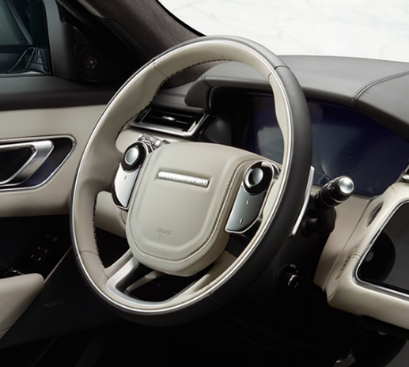
- Report rates up to 100Hz
- Single- and dual finger gesture recognition
- Best-in-class development tools
- Proven technology
Water Tolerance:
- Uses driven shield feature of AVR, PIC and SAM
- Prevents false touches as a result of moisture
- While scanning the red column, ALL other lines (highlighted) are driven at the same electrical potential
For more information CLICK http://www.designhmi.com/2016/03/13/automotive-steering-wheel-switch-designs/
http://www.designhmi.com/2013/06/16/low-profile-3d-styling-features-steering-wheel-switch/
2022 MY Steering Wheel Concepts for Semi-Autonomous & Autonomous Vehicles:
Continental has developed technology to monitor attention level with cameras. It is identified as Level 3 autonomous driving application.
Autoliv has in turn developed system based on zForce Technology integrated into the wheel. When driver puts the car in self-drive mode and takes hands off the wheel; all that is needed to regain control is touch the wheel. It is considered safe hand off.
Using optical sensors embedded in a steering wheel that features a series of glowing lights along its circumference, the zForce concept would allow drivers to interact, using gestures and motions, with various functions of the vehicle without removing their hands from the wheel to touch buttons. The driver could, for example, answer the phone by lightly tapping on one of the lighted sections.
The technology allows the car to know where the driver’s hands are placed and would permit carmakers to program functions into the wheel, allowing them to eliminate mechanical switches and knobs on the instrument panel.
Functionality Autoliv may be similar to IEE FSR + Capacitive touch technology.
Cadillac is developing technology based on Eye-Tracking – a technology that came up just 5+ years ago and is widely accepted today in medical and other applications. It will alert drivers if their gaze has shifted from road for too long. The most advanced in this area is Tobii Eye Tracking.
Mercedes system requires driver to be more proactive if their hands are off the wheel and press two buttons every 10 seconds. Also, wheel features touch-sensitive buttons Mercedes that respond to horizontal and vertical swiping gestures by the driver. Mercedes is calling the touch-sensitive buttons an industry first. Using them, the driver can control the infotainment system without taking hands off the wheel.
Volvo will allow drivers to move back and forth between autonomous and driver modes by touching buttons on the wheel.
Current steering wheel switch designs are an industry standard with essential feature design parameters being common across all. There is the steering wheel with spokes and the switch is installed on the inside off the steering wheel close to the central spoke.
After that the only difference is basic styling and features can be controlled rom the switch.
When you are trying to use any of these Steering Wheel Switch designs you must take your eyes off the road. Driver distraction is obvious though you may debate level of distraction. All the driver tests (subjective at this stage) conducted by me clearly is enough to increase chances of accident.
Clearly a better solution is needed.
A Non-Industry Innovator came up with a solution shown at the CES. It seems clearly move in the right direction. Just moving the switch and selector to the top is definitely a improvement.
The RADIOMIZE steering wheel design concept is unique and breaks the norm which includes an app and a steering wheel cover — complete with patented touchpad — designed to make controlling your phone as easy as thumbing your steering wheel.
It also includes a music and news “fusion” smartphone app that creates “personal, dynamic and mood-based” playlists for the user. Moreover, the more you use it, the more it learns what you like and adjusts what it serves up.
Here is an example of seamless steering wheel switch using IEE FSR sensor technology.
The Assembly Components are as below:
- Bezel and sensor
- Thin (< 0.65 mm) Light guide same shape
- Preformed cover foil over complete bezel (not shown)
- For switch-only version max thickness 0,5mm
- Potential Indentation for sensor and light guide
- Sensors
- 2 switch arrays (left/right) comprising each of 6 switches
- 2 x 3 connections
- 2 sensor combinations (left/right) showing touchpad and scroller functionality plus confirmation
- 2 x 7 connections (4 for touchpad/scroller, 3 for confirmation)
- Sensors translucent
- Class A cover integral part of sensor
- Symbols transparent for lighting
- Lighting
- Light guide foil beneath each sensor
- Lighting via LEDs
- 2 switch arrays (left/right) comprising each of 6 switches
For more information contact designhmi@gmail.com or IEE SA.














